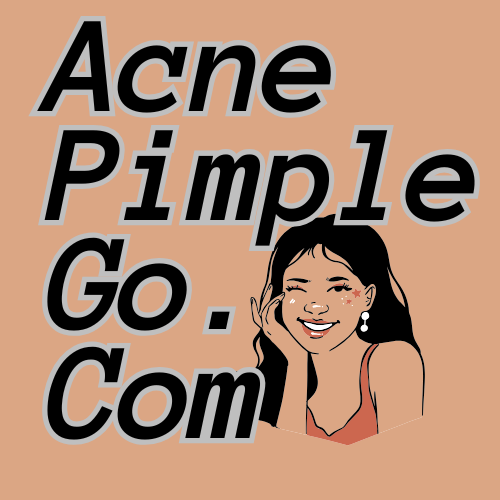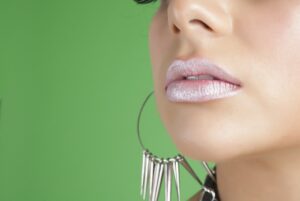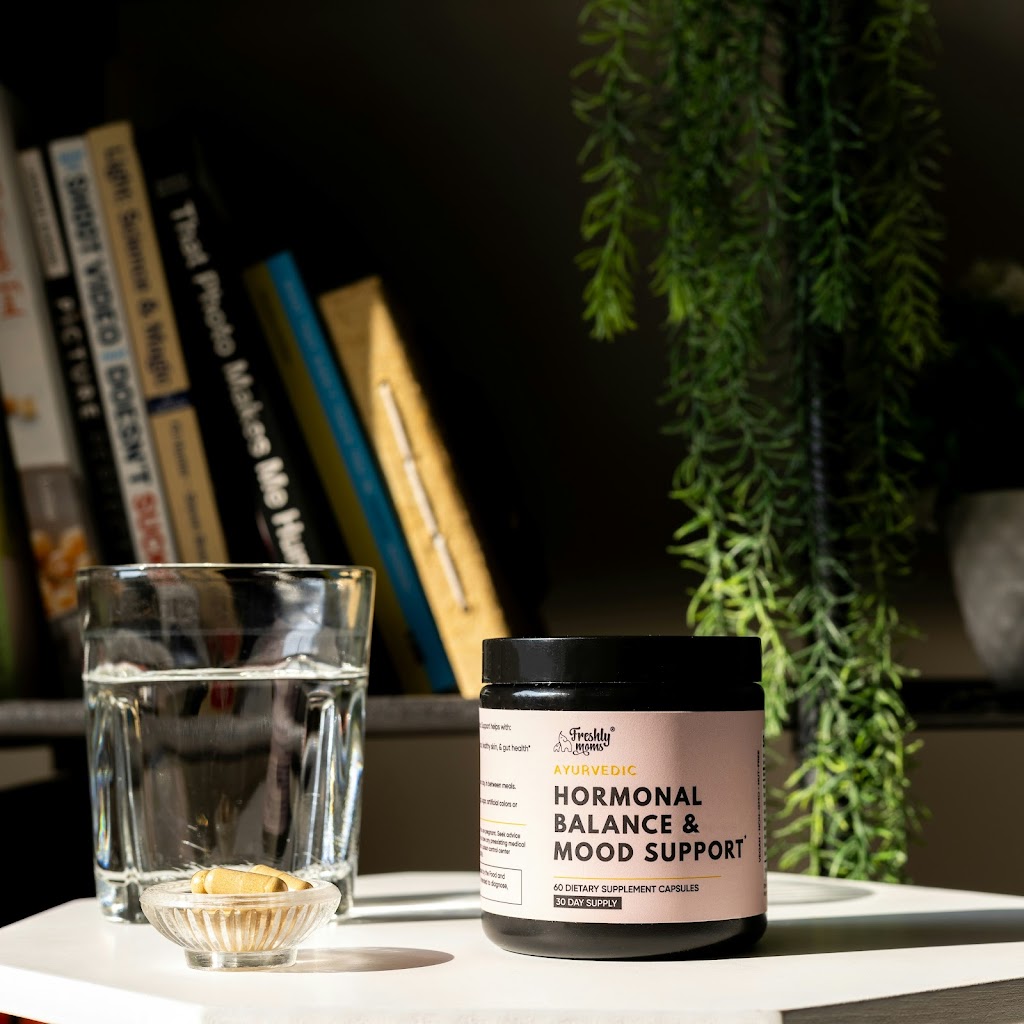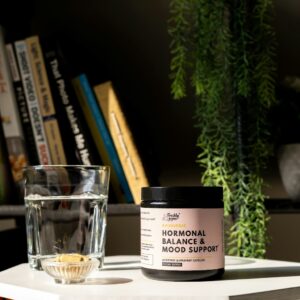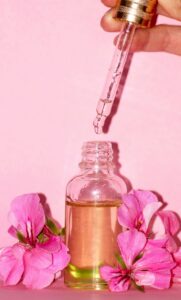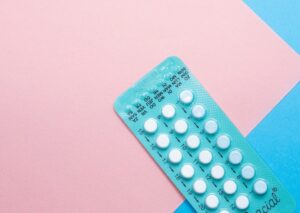Hormonal acne—those stubborn, often painful breakouts that tend to appear along the jawline, chin, and lower cheeks—affects millions of adults worldwide, particularly women. Unlike the random breakouts of adolescence, hormonal acne follows predictable patterns, often flaring up cyclically with hormonal fluctuations. While it can feel frustratingly persistent, modern dermatology offers multiple effective approaches to manage and heal this specific type of acne.
Understanding the Hormonal Connection
At its core, hormonal acne stems from an interplay between our endocrine system and skin. Several key hormonal factors contribute to these breakouts:
Androgen Activity
Androgens (like testosterone) stimulate oil glands to produce excess sebum. While we typically associate androgens with male hormones, women produce them too—just in smaller amounts. When androgen receptors in the skin are particularly sensitive, or when androgen levels fluctuate or increase, oil production can surge, creating an environment where acne thrives.
Insulin and IGF-1
Diet-induced insulin spikes can trigger a cascade of hormonal effects that exacerbate acne. High insulin levels increase the production of IGF-1 (insulin-like growth factor), which directly stimulates oil glands and promotes skin cell proliferation. This connection explains why high-glycemic foods are frequently linked to acne flares.
Cortisol Fluctuations
The stress hormone cortisol doesn’t directly cause acne, but it can trigger inflammatory responses and disrupt other hormonal balances. Chronic stress creates a feedback loop where hormonal acne worsens, creating more stress, further aggravating hormonal imbalances.
Hormonal Transitions and Cycles
Women often experience hormonal acne during predictable life transitions and cycles:
- Menstrual cycles (particularly premenstrual)
- Pregnancy
- Postpartum period
- Perimenopause and menopause
- Starting or stopping hormonal birth control
Clinical Treatment Options
Dermatologists have developed several effective treatment pathways for hormonal acne that address the root causes rather than just managing symptoms.
Oral Medications
Spironolactone: Originally developed as a blood pressure medication, spironolactone has become a dermatological staple for treating hormonal acne in women. It works by blocking androgen receptors and decreasing testosterone production. Results typically emerge within 2-3 months, with many patients experiencing significant clearing. Dosages range from 25-200mg daily, with most women responding well to 50-100mg. Because it affects hormone levels, it’s typically only prescribed to women.
Combined Oral Contraceptives: Certain FDA-approved birth control pills can effectively reduce hormonal acne by regulating hormone fluctuations. Formulations containing drospirenone (like Yaz and Yasmin) appear particularly effective, as drospirenone has anti-androgenic properties similar to spironolactone.
Low-Dose Isotretinoin: While traditional isotretinoin (Accutane) courses involve higher doses for 4-6 months, dermatologists sometimes prescribe low-dose isotretinoin (10-20mg daily) for longer durations specifically for hormonal acne. This approach minimizes side effects while maintaining efficacy.
Metformin: For patients with confirmed insulin resistance or polycystic ovary syndrome (PCOS), metformin can improve both hormonal parameters and acne by enhancing insulin sensitivity.
Topical Treatments
While traditional topicals like benzoyl peroxide and salicylic acid help manage existing breakouts, newer topical options target hormonal acne more directly:
Winlevi (Clascoterone): FDA-approved in 2020, this groundbreaking topical cream specifically targets androgen receptors in the skin without systemic hormonal effects. It’s essentially “topical spironolactone” and shows promising results for both male and female hormonal acne patients.
Retinoids: Topical retinoids (adapalene, tretinoin, tazarotene) remain a cornerstone of acne treatment. They help normalize skin cell turnover, preventing the clogged pores where hormonal acne begins. For hormonal acne specifically, these are most effective as part of a comprehensive treatment approach.
Azelaic Acid: This underrated ingredient has anti-inflammatory and antimicrobial properties while also helping to normalize skin cell turnover. It’s particularly useful for hormonal acne accompanied by post-inflammatory hyperpigmentation.
Dietary and Lifestyle Modifications
Research increasingly supports the connection between certain dietary patterns and hormonal acne. Strategic modifications can significantly reduce breakouts by addressing underlying hormonal triggers.
Blood Sugar Regulation
Multiple studies have demonstrated links between high-glycemic diets and acne severity. Foods that spike blood sugar can trigger a cascade of hormonal responses that aggravate acne:
- Reduce high-glycemic carbohydrates: Minimize refined sugars, white bread, white rice, and processed snacks
- Choose complex carbohydrates: Opt for whole grains, legumes, and vegetables that release glucose more gradually
- Balance meals with protein and healthy fats: This slows glucose absorption and minimizes insulin spikes
- Consider intermittent fasting: Some patients report improvements with time-restricted eating, which can improve insulin sensitivity
Dairy Considerations
The relationship between dairy and hormonal acne remains complex and individualized. Cow’s milk naturally contains hormones and growth factors that can influence human hormone receptors. Additionally, the whey protein in dairy stimulates insulin and IGF-1 production. Consider:
- A 30-day dairy elimination trial to assess impact
- If eliminating all dairy seems drastic, prioritize removing skim milk, which shows the strongest acne correlation
- Alternative milks like almond, oat, or coconut milk as replacements
Anti-Inflammatory Focus
Chronic inflammation underlies hormonal acne. An anti-inflammatory dietary approach can help calm this response:
- Increase omega-3 fatty acids: Found in fatty fish, walnuts, flaxseeds, and chia seeds
- Consume antioxidant-rich foods: Colorful fruits and vegetables, green tea, and turmeric
- Identify personal trigger foods: Through elimination diets or food sensitivity testing
Supplement Support
While the supplement industry makes many claims, several options have scientific support for hormonal acne:
- Zinc: 30mg elemental zinc daily can reduce acne severity, particularly when combined with conventional treatments
- Vitamin D: Deficiency correlates with increased acne severity; supplementation may help if levels are low
- Spearmint tea: Contains anti-androgenic compounds; some studies show reduced free testosterone with regular consumption
- DIM (Diindolylmethane): This compound derived from cruciferous vegetables may help balance estrogen metabolism, though research remains preliminary
- Berberine: Similar to metformin, it may improve insulin sensitivity with beneficial effects on hormonal acne
- Omega-3 fatty acids: 1-2g daily can help reduce inflammation and may improve insulin sensitivity
Stress Management
Stress management isn’t complementary but central to hormonal acne treatment:
- Regular moderate exercise (avoiding excessive high-intensity workouts, which can spike cortisol)
- Mind-body practices like meditation, yoga, or tai chi
- Adequate sleep (7-9 hours per night)
- Boundary-setting and psychological support when needed
Skincare Strategies
While skincare alone rarely resolves hormonal acne completely, the right regimen supports treatment and prevents complications:
Gentle Cleansing
Over-cleansing stimulates more oil production. Opt for:
- pH-balanced, sulfate-free cleansers
- Lukewarm (never hot) water
- Cleansing twice daily maximum
Strategic Exfoliation
Chemical exfoliants help prevent the clogged pores where hormonal acne begins:
- Salicylic acid (2%) penetrates oil-filled pores effectively
- Mandelic acid offers gentle exfoliation with additional antibacterial benefits
- Limit exfoliation to 2-3 times weekly to prevent barrier damage
Niacinamide Integration
This versatile ingredient addresses multiple aspects of hormonal acne:
- Regulates sebum production
- Strengthens skin barrier function
- Reduces inflammation
- Fades post-inflammatory hyperpigmentation
Look for serums with 5-10% concentration.
Non-Comedogenic Moisture
Even oily, acne-prone skin needs hydration. Impaired barrier function worsens acne through increased inflammation and reactive oil production:
- Lightweight gel moisturizers with humectants like hyaluronic acid and glycerin
- Oil-free formulations labeled “non-comedogenic”
- Consider containing ceramides to repair barrier damage from treatments
Sun Protection
Many acne treatments increase photosensitivity, making daily sun protection non-negotiable:
- Oil-free, non-comedogenic formulations
- Mineral options (zinc oxide, titanium dioxide) for sensitive or treatment-irritated skin
- Daily application, regardless of indoor/outdoor plans
Treatment Approach by Severity
Mild Hormonal Acne
For occasional, mild breakouts concentrated around the jawline and chin:
- Topical treatments (retinoids, azelaic acid)
- Dietary modifications focusing on blood sugar regulation
- Basic supplement support (zinc, vitamin D if deficient)
- Consistent skincare routine
Moderate Hormonal Acne
For regular breakouts with some deeper, painful cysts:
- Low-dose spironolactone (25-50mg) or hormonal birth control
- Comprehensive dietary approach including dairy evaluation
- Targeted supplement protocol
- Prescription-strength topicals
- Stress management implementation
Severe Hormonal Acne
For persistent, painful cystic breakouts with scarring potential:
- Higher-dose spironolactone (100-200mg) or combined approaches
- Possible low-dose isotretinoin consideration
- Investigation of underlying conditions (PCOS, insulin resistance)
- Professional stress management support
- Comprehensive lifestyle overhaul
- Dermatologist-supervised combined therapy
Special Considerations
Hormonal Acne in Men
Men with hormonal acne face limited treatment options since spironolactone and birth control aren’t appropriate. Alternative approaches include:
- Topical androgen blockers like Winlevi
- Low-dose isotretinoin
- Dietary interventions focusing on insulin regulation
- Potential off-label use of other anti-androgens under close medical supervision
Acne During Pregnancy
Pregnancy often triggers hormonal acne flares but limits treatment options. Safe approaches include:
- Azelaic acid (pregnancy category B)
- Gentle chemical exfoliation with glycolic acid
- Dietary modifications (particularly important for gestational diabetes risk)
- LED blue light therapy
- Probiotic supplementation
Perimenopause and Menopausal Acne
Many women are surprised by acne during perimenopause and menopause, when shifting ratios of estrogen to androgens create a functionally androgen-dominant state:
- Spironolactone can be particularly effective during this transition
- Topical retinoids address both acne and age-related skin changes
- Hormone replacement therapy may help in some cases
- Strategic stress management for sleep-disrupted periods
The Multi-Modal Approach
For most people, successful hormonal acne treatment involves multiple complementary strategies. Rather than seeking a single “magic bullet,” the most effective approach typically combines:
- Appropriate oral medication addressing hormonal balance
- Targeted topical treatments
- Dietary modifications reducing hormonal triggers
- Strategic supplement support
- Stress management and lifestyle optimization
- Consistent, appropriate skincare
This comprehensive approach doesn’t just clear skin temporarily but works to balance the underlying hormonal factors for long-term resolution.
When to Seek Professional Help
While mild hormonal acne sometimes responds to over-the-counter approaches, consider consulting a dermatologist if:
- Breakouts are moderate to severe
- Acne persists despite consistent over-the-counter treatment
- Deep, painful cysts develop that could lead to scarring
- Acne significantly impacts emotional wellbeing
- Acne appears alongside other symptoms suggesting hormonal imbalance
Some patients benefit from collaborative care between a dermatologist and endocrinologist or gynecologist, particularly when hormonal acne suggests underlying endocrine disorders.
The Emotional Component
The psychological impact of hormonal acne—especially for adults who thought they’d left acne behind in adolescence—shouldn’t be underestimated. The cycle of breakouts can trigger anxiety, depression, and social withdrawal, which in turn worsen stress and potentially aggravate hormonal imbalances.
Addressing the emotional component through therapy, support groups, or mindfulness practice isn’t secondary but integral to healing. Many patients find that as they develop compassion for themselves and their skin’s healing process, both stress levels and acne severity diminish.
Conclusion: A Personalized Path Forward
Hormonal acne responds best to individualized treatment. What works for one person may not work for another, depending on their unique hormonal patterns, lifestyle factors, and genetic predispositions. The good news is that with persistent, multi-modal treatment and the guidance of knowledgeable healthcare providers, even the most stubborn hormonal acne can improve significantly.
The journey to clear skin often requires patience—most treatments take 2-3 months to show substantial improvement. Throughout this process, remember that hormonal acne isn’t a reflection of poor hygiene or self-care, but a complex interplay of biological factors often beyond immediate control. With appropriate treatment, however, these factors can be balanced, restoring both clear skin and confidence.
